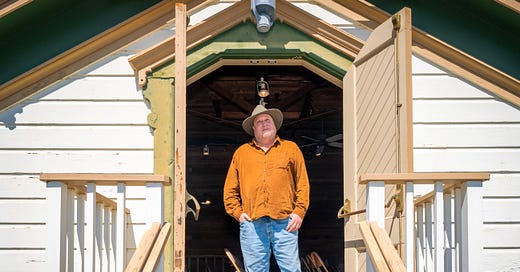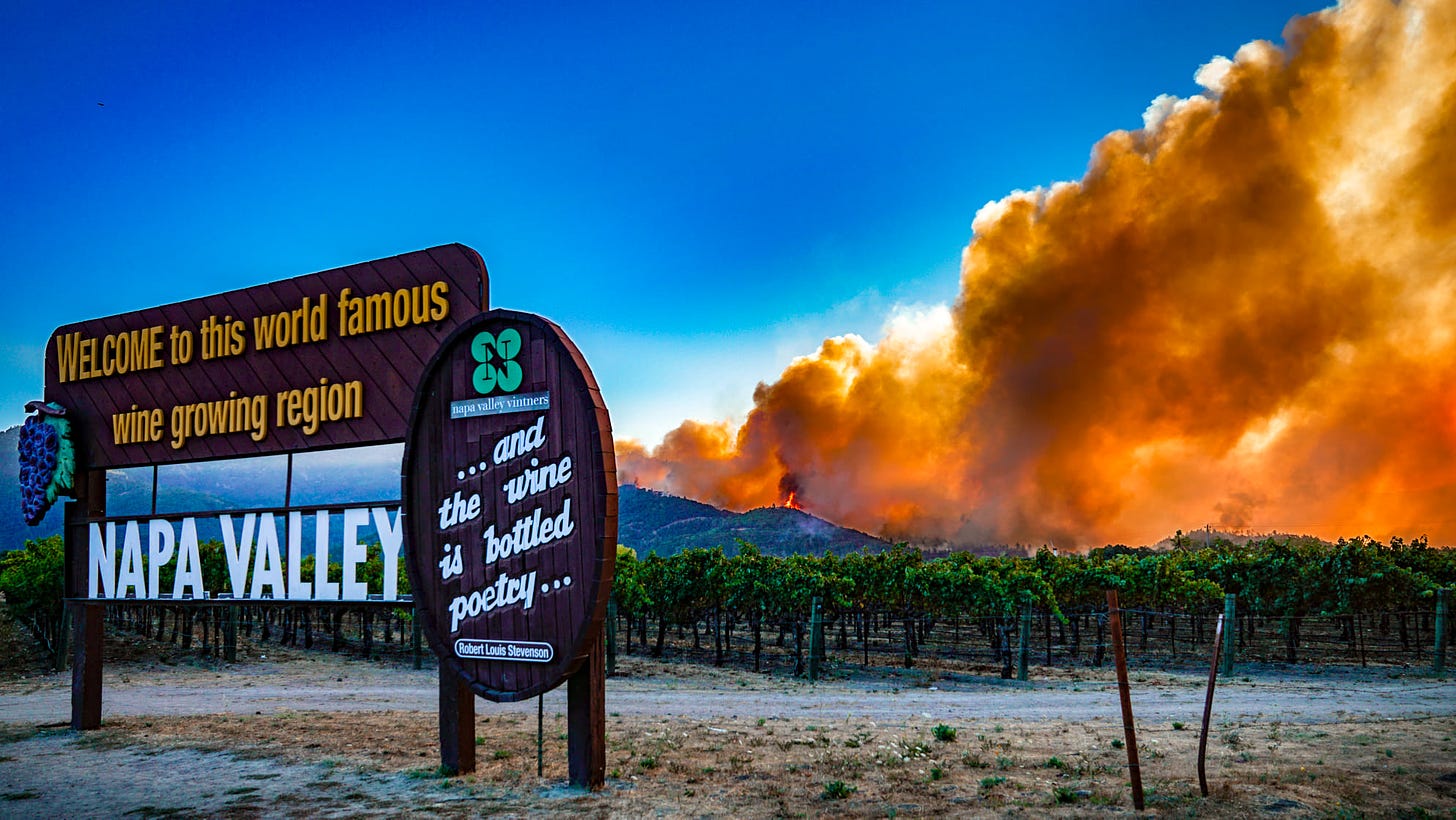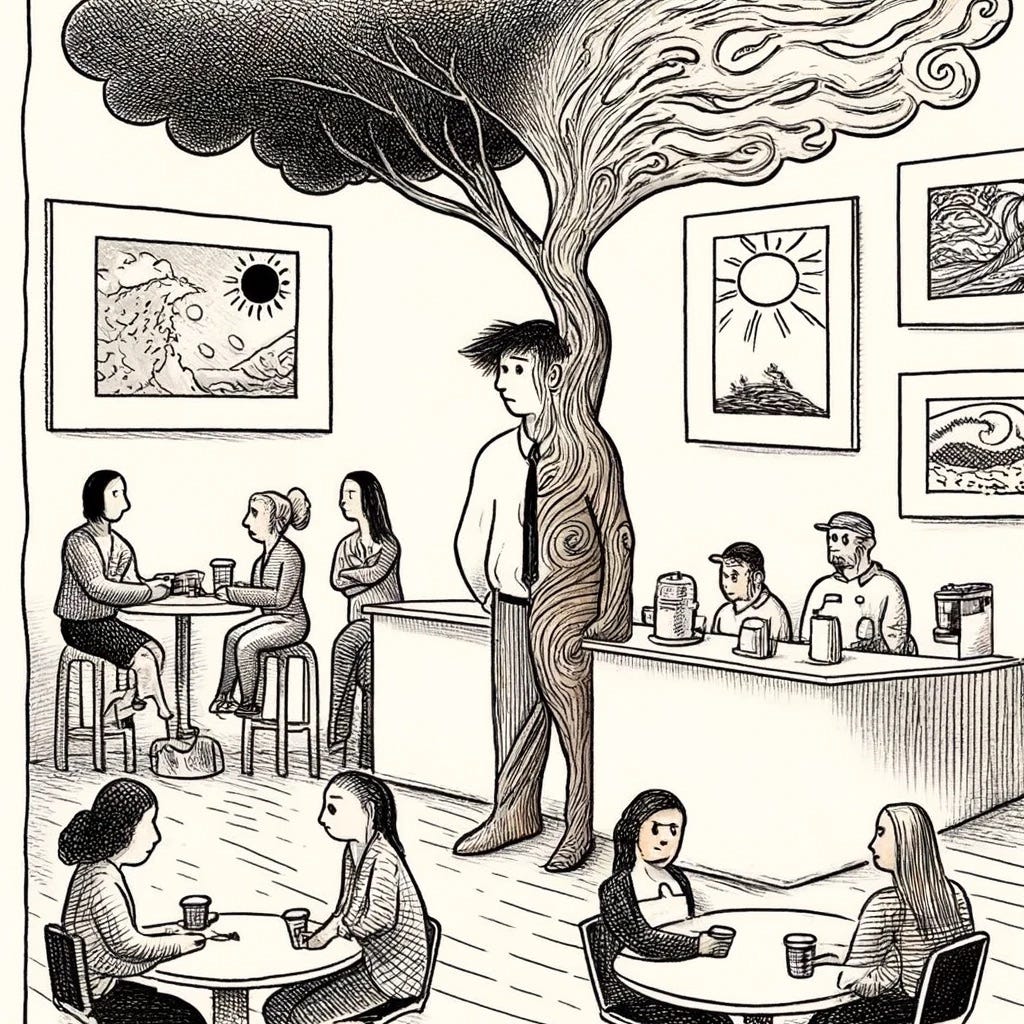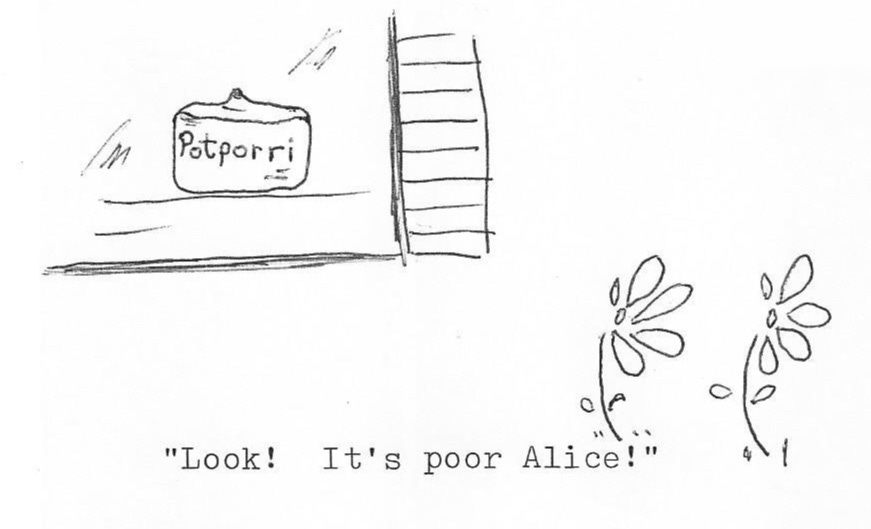Dear Napa Valley Features Community,
This week marks a significant milestone — it has been one year since we embarked on this journey together. Thanks to your support and engagement, Napa Valley Features has evolved into a platform where community storytelling provides deep insights into both our shared challenges and achievements. The issues we've highlighted resonate well beyond Napa Valley's borders.
Here’s a glimpse of what we've achieved together:
As of May 4, our community now includes 3,639 subscribers, of which 936 are paid. Our paid subscribers allow us to continue.
We’ve shared 435 stories that delve into what makes the Napa Valley tick, featuring more than 30 exceptional contributors and covering a wide array of topics — from economic challenges to innovative climate change solutions and from the opening of new restaurants to the inspiring stories of students and mentors.
We've remained subscriber-funded with no ads or corporate donations, maintaining zero conflicts of interest. Our approach is non-sensational, focusing on objective facts rather than clickbait.
Your feedback has been overwhelmingly positive, encouraging us to continue improving and expanding our content.
Looking ahead to another exciting year, we are facing a stark reality: The plight of local journalism has worsened, highlighted by global newspaper closures and even National Public Radio facing challenges. This underscores the critical importance of our mission at Napa Valley Features. To continue our impact, we must expand our reach, increase the number of paid subscribers and innovate new ways to engage with audiences who value a deep understanding of local issues.
What’s next for us:
Forward thinking in action: Every day, we strive to enhance the depth, impact and relevance of our stories to inform better decision-making and foster deeper connections.
New schedule: We will publish content from Wednesday to Sunday, dedicating Monday and Tuesday to developing new creative projects for the platform.
Multimedia expansion: We are exploring the addition of multimedia storytelling through podcasts and videos to expand our narrative scope and extend our reach. Email us with your ideas and suggestions.
The power of sharing local, thoroughly researched and well-told stories is immense. Through our work we’ve discovered that the narratives of Napa Valley often serve as a bellwether for wider issues, influencing topics that range from the wine industry to resource management and environmental stewardship. These stories not only connect, inform and engage our community but also offer valuable lessons and insights applicable globally. We remain committed to delivering stories that not only reflect the spirit of Napa Valley but also resonate with and benefit broader audiences, enriching our collective understanding and appreciation of these crucial issues.
The White Barn is St. Helena’s ‘listening space’
By Tim Carl
ST. HELENA, Calif. — Locating St. Helena's White Barn music and art venue is simple. Drive until Sulphur Springs Avenue dead ends and veer left, where age-old eucalyptus trees stand guard over a mysterious, gateless entry flanked by weathered brick pillars topped with lanterns that seem to whisper of mysteries of old.
The White Barn's origins trace back to its construction as part of the estate of Erasmus Darwin Keyes, a significant figure in Napa Valley's history. Born in 1810 in Brimfield, Massachusetts and raised in Maine, Keyes served as a Union general during the American Civil War, playing notable roles in various campaigns. In 1867, he purchased 1,500 acres of land in St. Helena’s western hills, planting grapes and building Edge Hill Winery, an influential winery recognized as the oldest three-level gravity-fed winery in the area.
The Keyes property changed hands several times before 1900 and was eventually broken into smaller parcels. The 800 acres where the White Barn sits were purchased in 1939 by David Garden Jr.'s grandparents — Nelson and Evelyn.
"Beyond my grandfather’s desire to become a cattle rancher, it’s not exactly clear why they purchased this property," David said, suggesting it might have been influenced by his grandfather's involvement in the Manhattan Project in the Bay Area, seeking a peaceful retreat during what was a tumultuous time.
Nelson Garden worked at the UC Berkeley Radiation Laboratory, where he headed the Health Chemistry Group. His team developed the "glove box" used to handle radioactive materials safely, which was a significant contribution to the project. Additionally, Nelson Garden was involved in advising on the safe handling of radioactive material at other Manhattan Project sites, including Los Alamos in New Mexico and Oak Ridge in Tennessee.
Their daughter-in-law, and David’s mother, Nancy Garden, inspired by her lifelong passion for music and arts, envisioned that the remote property might one day become a place where the community could gather to experience diverse cultural expressions.
And so, when David and his family moved full time to the property in 1973 when David was 13 so that they might help their aging grandparents manage the 800-acre property, Nancy started straight away converting the old carriage house barn into a venue that would eventually become known as the White Barn. It has since offered a range of performances that reflect both local and international talents.
Diverse programming and community engagement
With Nancy, now 93, having passed the torch to David, the White Barn continues to expand its offerings under his direction, branching out beyond classical music and musical theatre to include an eclectic array of performances.
"Mom is mostly into musicals and classical, with a little bit of jazz," David said. "I like to be a little more all over the place, whether it be jazz or bluegrass, or even single act plays, such as one we had that focused on Walt Whitman."
Recently, the venue has hosted notable acts such as Jazz artist Ben Rosenblum and the high-energy Dirty Cello, led by cellist Rebecca Roudman. Its future programming includes innovative puppet shows that cater to both children and adults, featuring an adult’s only 'puppet slam' that will add a risqué flavor, according to David.
Local and broader impact
The White Barn's influence extends far beyond its stage, leaving a mark on both the local community and the broader cultural landscape. An upcoming event that epitomizes the venue’s community focus is the performance by the Terry Family Band, a local folk group.
"The White Barn is one of the few ‘listening spaces’ in the valley,” said Jim Terry, the band's leader. “While there are various musical venues in the valley, ranging from bars with background music to large, special events viewed mainly from big screens, intimate spaces like the White Barn are crucial. Here, artistic expression can directly connect with the audience, allowing for the exploration and discussion of important ideas."
For Terry, the White Barn represents an ideal venue, providing an intimate setting where the nuances and subtleties of a performance can be fully appreciated. It's a sanctuary where music becomes a form of communication, bridging divides and sparking conversations on significant themes. Terry's songs often delve into poignant reflections on historical events, such as their moving tribute to Emmett Till, a pivotal figure in the Civil Rights Movement. Through their music, the band draws attention to the brutal events of 1955 when Till, a young African American boy, was tragically lynched in Mississippi — a moment that galvanized the Civil Rights Movement and reverberates with significance to this day.
But the Terry Family Band's creative endeavors extend beyond historical narratives, encompassing deeply personal projects like the album "Hometown Tragedies." Released during a period of heartfelt remembrance and advocacy, the album serves as a homage to resilience in the face of adversity. Songs like "Fire in the Wind" poignantly capture Terry's harrowing experiences during the 2017 Atlas Fire, offering a reminder of the community's vulnerability and resilience in the face of natural disasters.
Beyond providing a venue where artists like Terry might talk about the challenges of our times, the White Barn has proven itself to be another type of vital asset to the community. During the devastating 2020 Glass Fire, the venue served as a strategic basecamp for firefighting efforts. David recalled the harrowing moments when the property became a hub of activity, with firefighters utilizing its facilities and resources to combat the blaze.
"It was touch and go there for a while," David said. "I was here helping — showing maps of roads and assisting the crews as I could."
Legacy and future directions
Today, the White Barn embodies a commitment to both cultural enrichment and community engagement. Continuing its longstanding tradition, the venue donates a portion of its proceeds from each event to local and international arts groups and charitable organizations, reinforcing its dedication to fostering cultural vibrancy and social responsibility.
Although alcohol is not served at the shows, complimentary refreshments are often available during intermissions which enhances the communal atmosphere, fostering connections and camaraderie among attendees.
Despite facing challenges posed by fires and the pandemic, the vision for the White Barn remains unwavering. Though David's father passed away last year at the age of 93, Nancy continues to attend events, gracefully ascending the stairs to the second level "jewel box" concert room, which hosts performances ranging from monthly to weekly, depending on the season. Her devotion and vision, along with her family’s dedication, exemplifies the White Barn's commitment to preserving its rich heritage while embracing the promise of the future.
If today's story captured your interest, explore these related articles:
Tim Carl is a Napa Valley-based photojournalist.
Levity Corner
Caption contest. Pick your favorite caption or add your own in the comments below
Vote for your favorite in the poll below (there’s not enough room in the polls for the complete answers).
"Who's a good robot? You are!"
"When your robot has more outdoor hobbies than you do."
"Some pets are low maintenance, others require batteries."
“Robots taking the lead.”
"Robots walking dogs: because humans found the 'sit' command too compelling."
Or leave your own suggested caption in the comments.
Last week’s winner
Last week’s caption contest winner
Last week, in Sunday E-dition: When did we stop being ‘nice’?, we had a tie with "Even in the storm, kindness blooms where it's planted,” and "In the cafe of life, be someone’s sunshine,” both receiving 29% of the vote.
Last Week
Dave Stoneberg highlighted the opening of UpStage Napa Valley's production "The Sound Inside," set to begin on May 3 in St. Helena, as reported in his article "UpStage Napa Valley’s ‘The Sound Inside’ opens Friday in St. Helena." Starring Shannon McDermott and Michael Hunter, the play delves into themes of literary passion and life's consequential choices, drawing comparisons to Dostoevsky's "Crime and Punishment." Artistic Director Sharie Renault praised the play for its intense and compelling narrative, underscoring the theater's commitment to presenting provocative and meaningful works.
Tim Carl discussed a controlled burn in Angwin aimed at reducing wildfire risks and restoring forest health, in his column "Fighting fire with fire." Conducted by Pacific Union College with CAL FIRE and Napa Firewise, this 14-acre burn marked a significant shift towards integrating traditional Native American fire management techniques to enhance biodiversity and ecosystem resilience. The initiative, part of a broader effort to reintroduce controlled burns, serves as a sustainable approach to managing wildfire threats and maintaining healthy forests.
Glenda Winders addressed the increasing incivility toward service workers in "Sunday E-dition: When did we stop being ‘nice’?" Winders shared the experiences of Joe, a young service worker facing harassment and hostility, exacerbated by his sexual orientation. Despite hoping for better treatment upon returning to California, Joe found that disrespectful behavior was widespread. Winders cited rising hate crime statistics as evidence of a broader societal shift toward hostility, particularly against LGBTQ+ individuals. The article highlights the need for civility and respect in daily interactions, urging readers to treat service workers with kindness.
Dan Berger explored the impact of global warming on wine production in "Dan Berger's wine chronicles: The evolution of wine in a warming world." He outlined the industry's efforts to mitigate higher alcohol levels due to increased temperatures, including the use of advanced technologies like spinning cone technology. Berger also highlighted a consumer shift towards lower-alcohol beverages, reflecting broader changes in wine production and market preferences.
Cindy Kerson highlighted the ongoing battle against weeds in her article "Now is the season to watch for weeds." Leading the "Low-Maintenance, Low-Water Garden" at Napa’s Las Flores Learning Garden, Kerson described the spring surge of weeds, facilitated by warm, moist conditions. She and her Master Gardener colleagues employ tools like Hori Hori knives and "Grandpa’s weeder" to manage the influx effectively. The piece also touched on the challenges of invasive species, particularly Oxalis, and the surprise emergence of potentially invasive but attractive weeds like the oyster plant.
Next Week
Next week we have more interesting articles from a host of Napa Valley Features' contributors. The week begins with Stoneberg offering insights into the latest agricultural developments in local high schools. Continuing on, the Master Gardener series will provide tips and tricks for gardening enthusiasts. Dan Berger will delve into Napa Valley's wine scene on Thursday, while Friday's Weekender highlights events and activities around St. Helena, including an exclusive at Charlie’s. Saturday brings Carl’s deep dive into Napa’s top taxpayers in the “Under the Hood” series. Additionally, there will be even more informative content for our readers throughout the week.











OK now, what’s the command for “turn left and walk”?